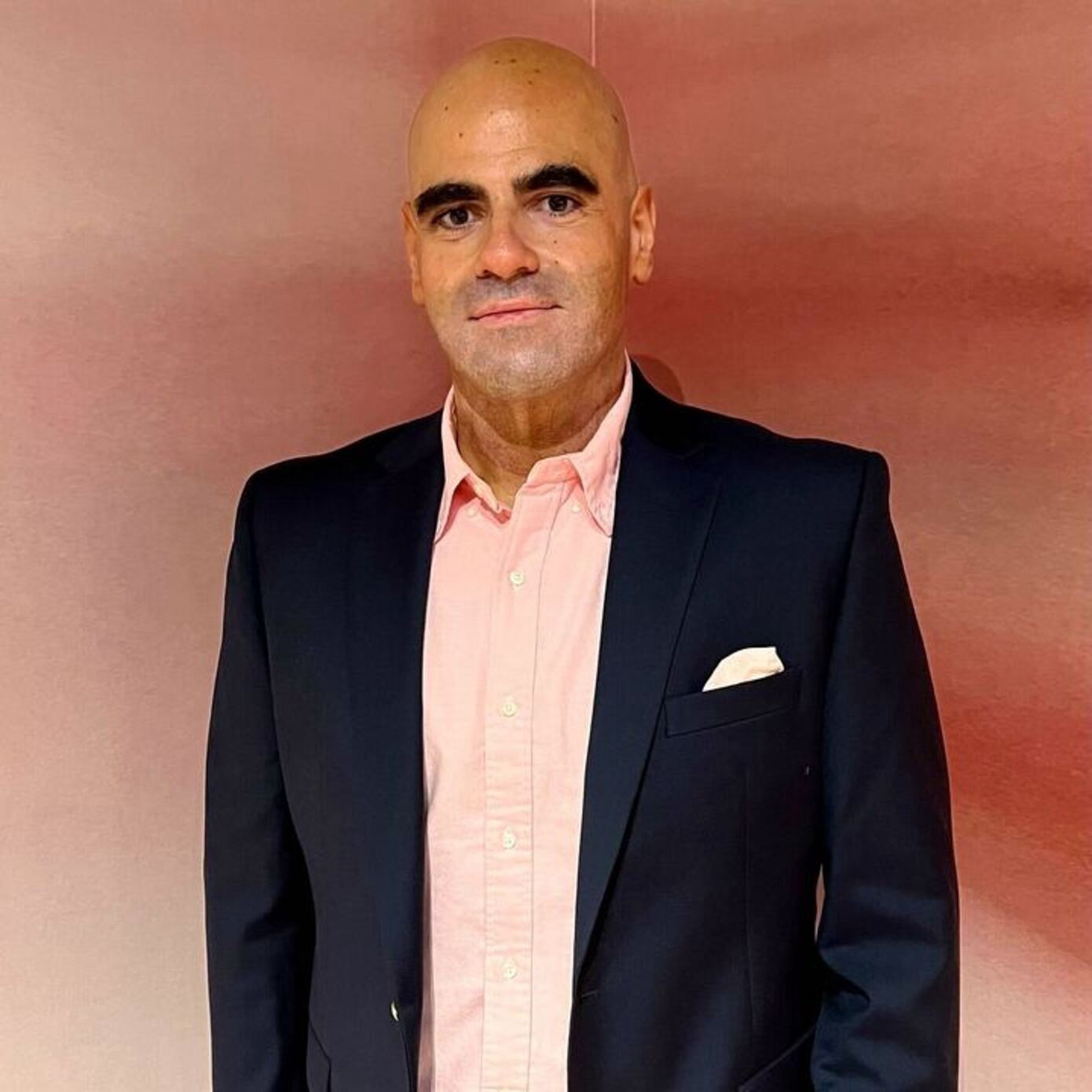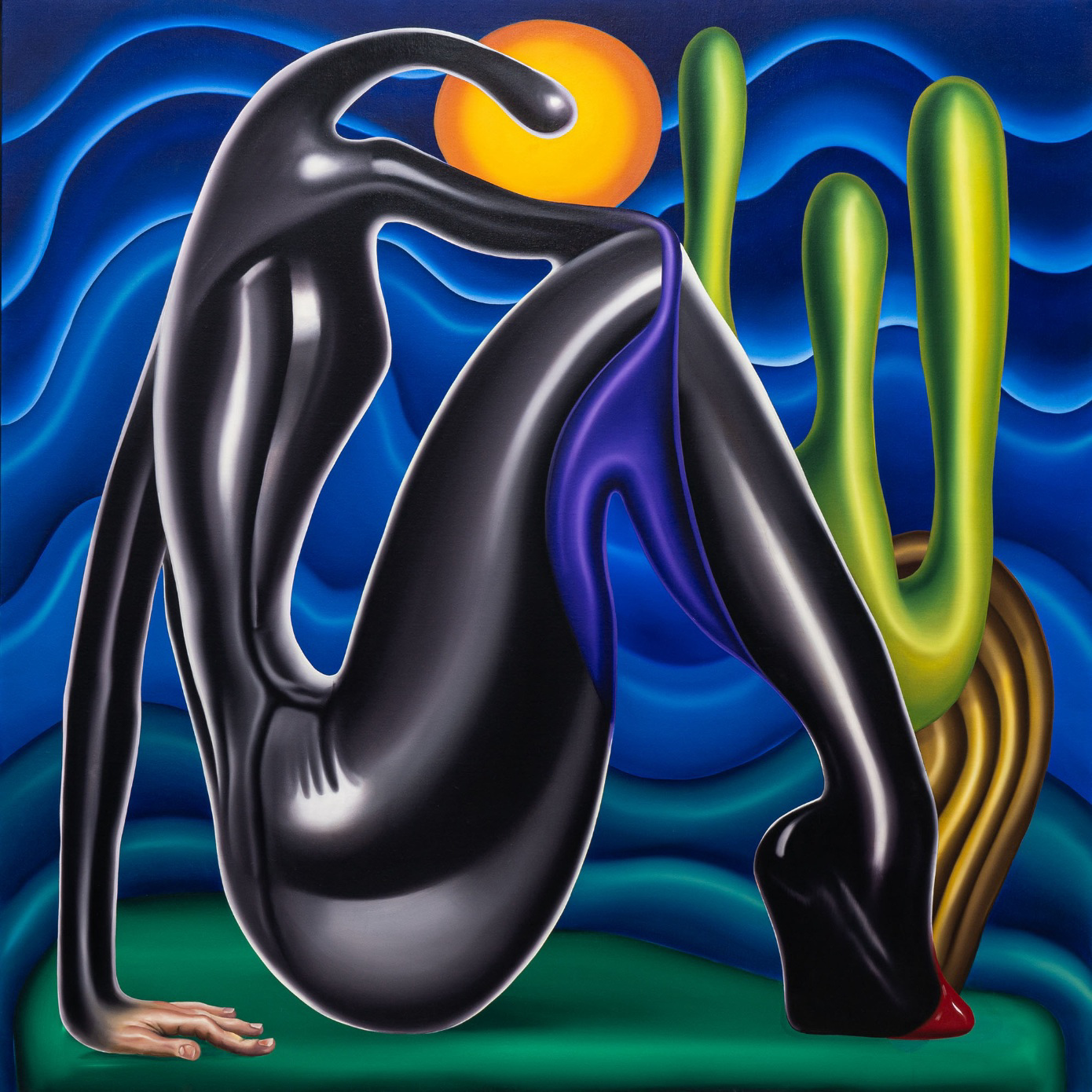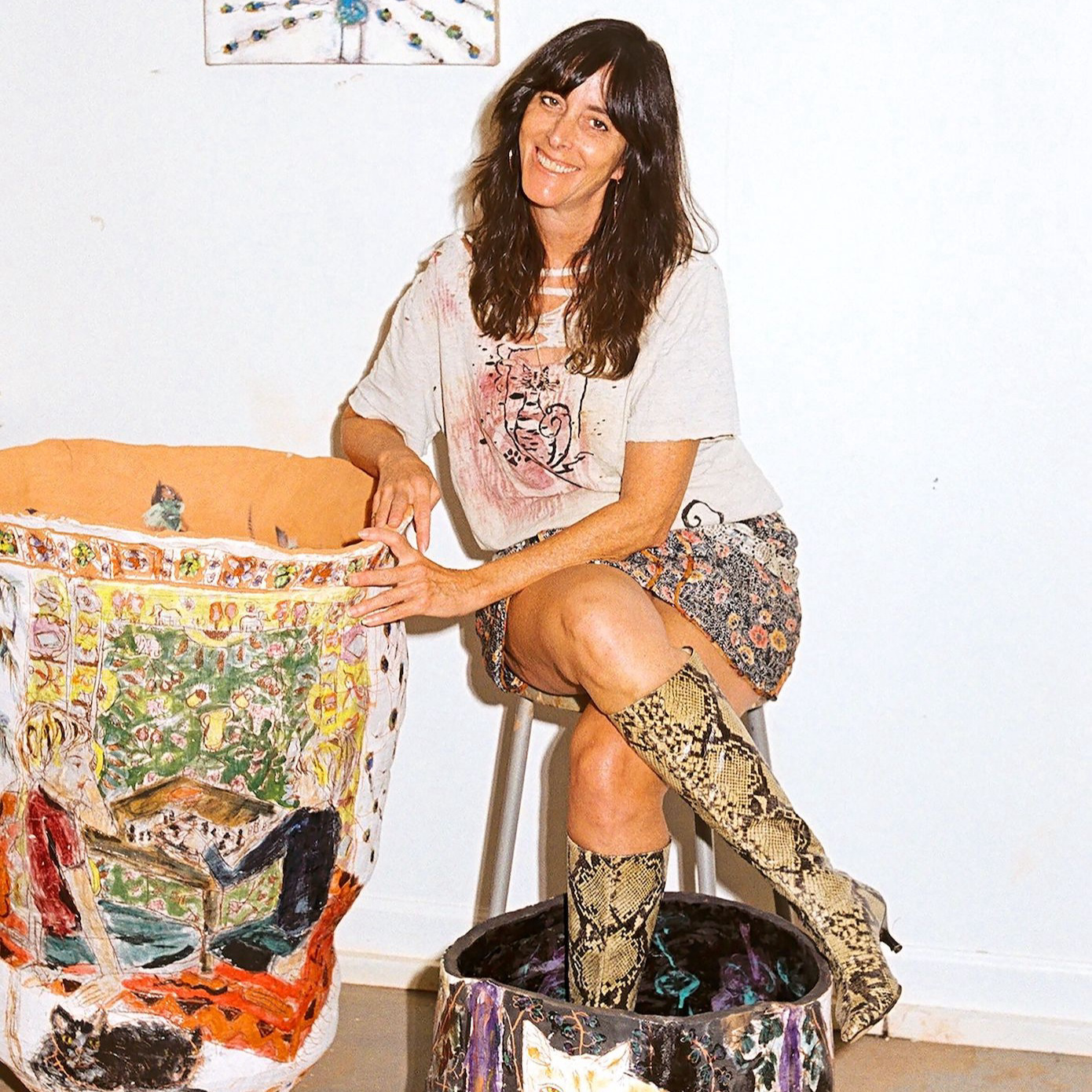When Frieze New York opens its doors to VIPs at the Shed next week, more than 60 galleries from all corners of the globe will vie for the attention of collectors and curators. Many will bring work by tried-and-true market darlings, sealing six-figure deals before the Ruinart is even popped.
Others, however, are using the moment to debut new talent on the global stage, bringing young and other yet-to-be-recognized artists to the fair for the first time. For some, it’s their first presentation in New York. Work by these newcomers spans media and subject matter—though this year’s showing tends toward the subtle and introspective, a welcome departure from often loud and vivid art-fair fare.
For this month’s Duly Noted column, we introduce five artists making their Frieze New York debuts.
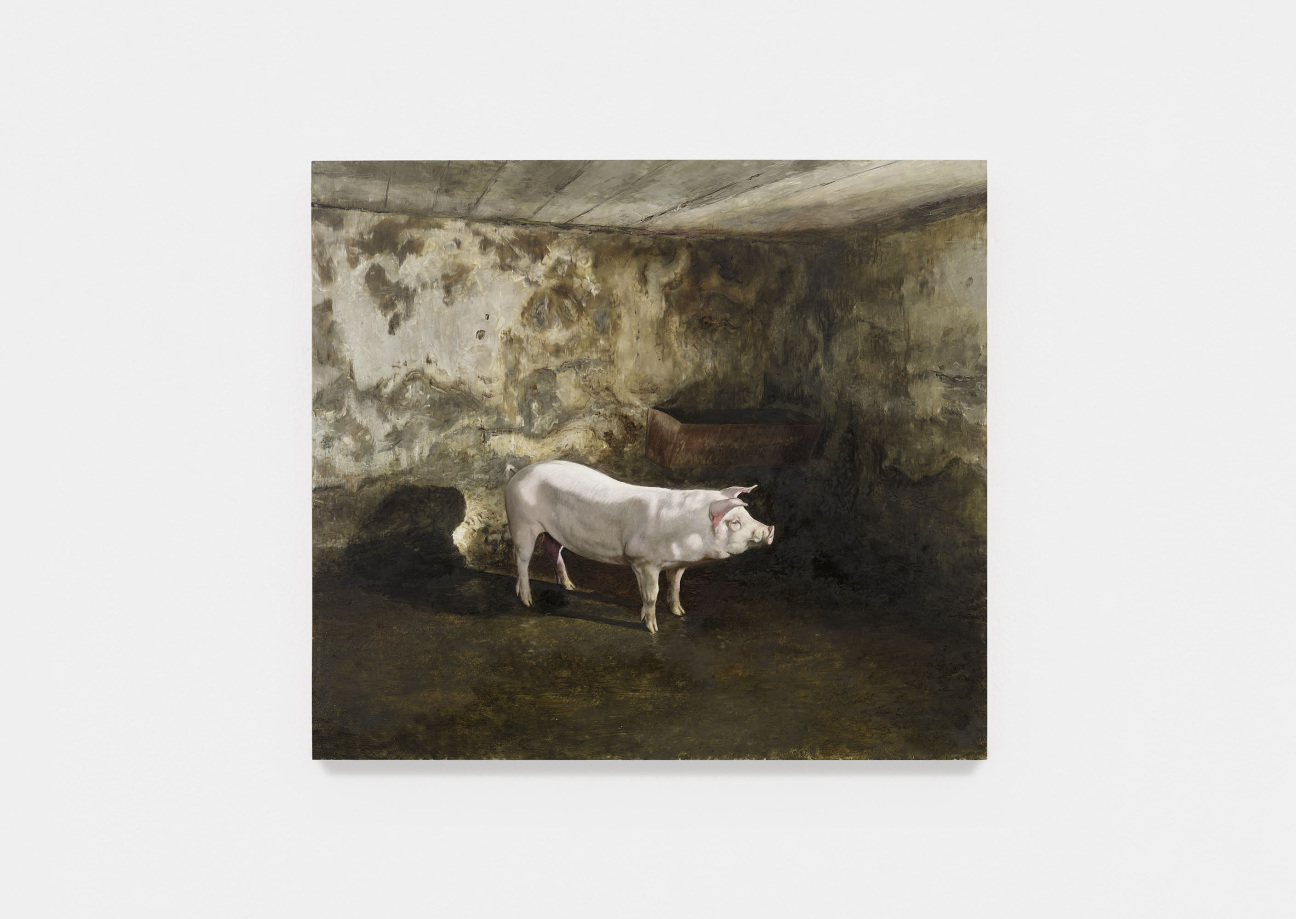
Karol Palczak at Emalin
At London’s Emalin, Karol Palczak’s paintings and videos will transport viewers to the rural Polish countryside where the artist (b. 1987) resides. After completing his studies in Kraków, Palczak returned to the land where he grew up, grounding his practice in the sublime landscape of forests, rivers, and hills that surrounded him.
While many artists paint from photographs, Palczak paints from video. “There’s something energetic or sensorial that he sees in painting, or aims to reproduce in painting, but finds is lost in photographs,” explains Emalin co-founder Angelina Volk. As a result, Palczak’s paintings feel almost historical, embodying traces of the land’s sweeping history, from the extermination of Jews and Poles during WWII to the rise and fall of communism and the socio-economic effects of the E.U. establishing a hard border between Poland and nearby Ukraine.
Emalin’s booth includes a selection of small-scale paintings (some featuring Palczak’s resident pigs) as well as videos, edited together from source footage taken for his paintings—all of which are priced between $5,000 and $15,000.
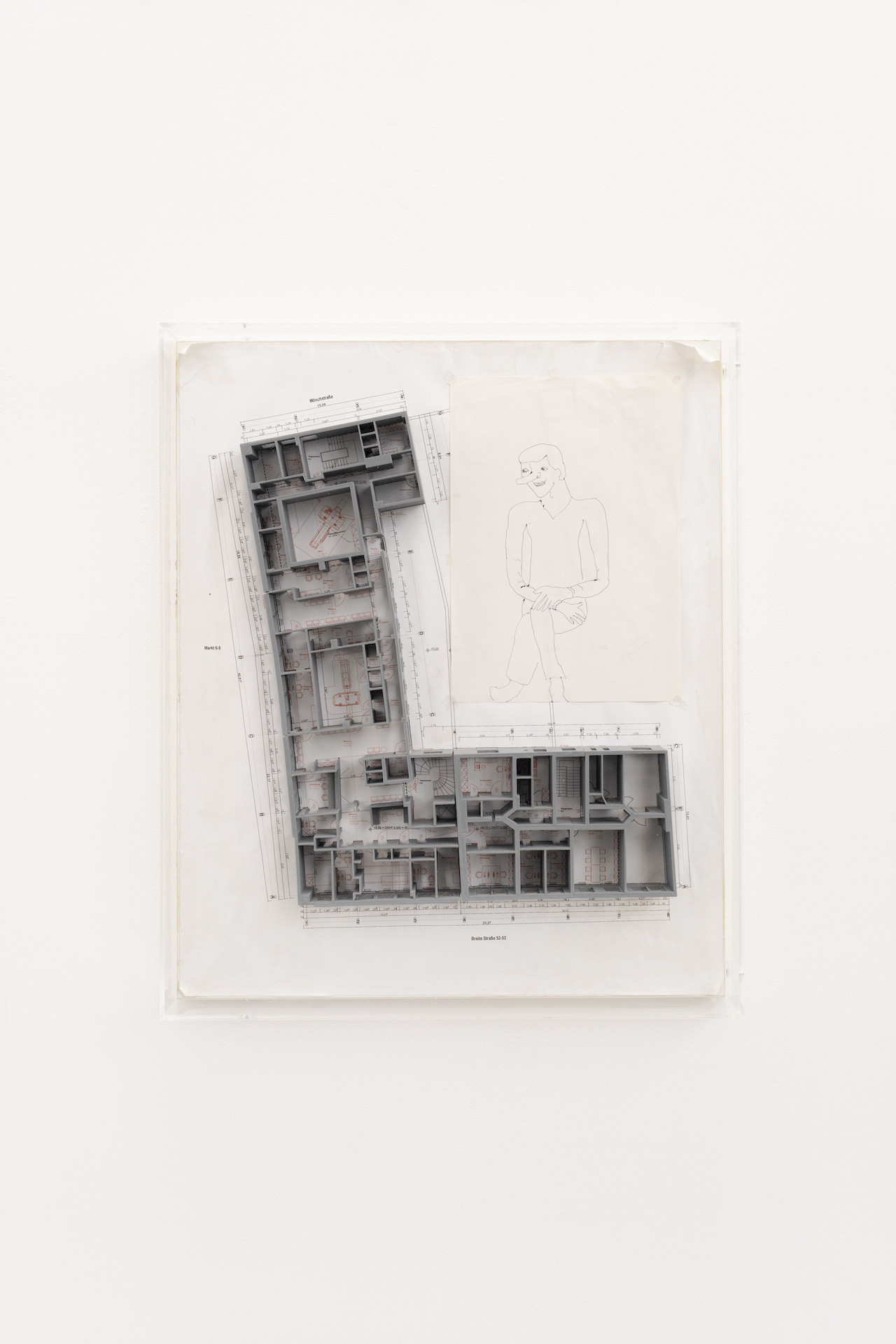
Tolia Astakhishvili at LC Queisser
Tbilisi’s LC Queisser offers viewers a brief introduction to Georgian artist Tolia Astakhishvili (b. 1974) in advance of her solo show at SculptureCenter, which opens May 9. (The gallery is sharing a booth with Emalin.) Grounded in drawing but landing somewhere between sculpture, installation, and architecture, Astakhishvili’s work accumulates and sheds elements with such fluidity that determining what actually constitutes a discrete, sellable object becomes its own conceptual investigation. On offer is a selection of mixed-media wall-mounted works, some of which are on canvas and other more sculptural ones in materials like water pipes, plasterboard and plexiglass, all ranging from $8,000 to $12,000. “The layering in her work is always about constructing or deconstructing spaces that were just built or just destroyed,” explains LC Queisser’s Lisa Offermann. “This layering comes a little bit from Georgia because architecture is so fluid here, so layered on each other.”
Astakhishvili’s American debut comes after years of increasing attention in Europe and especially in Germany, where she had three institutional solo shows last year alone.
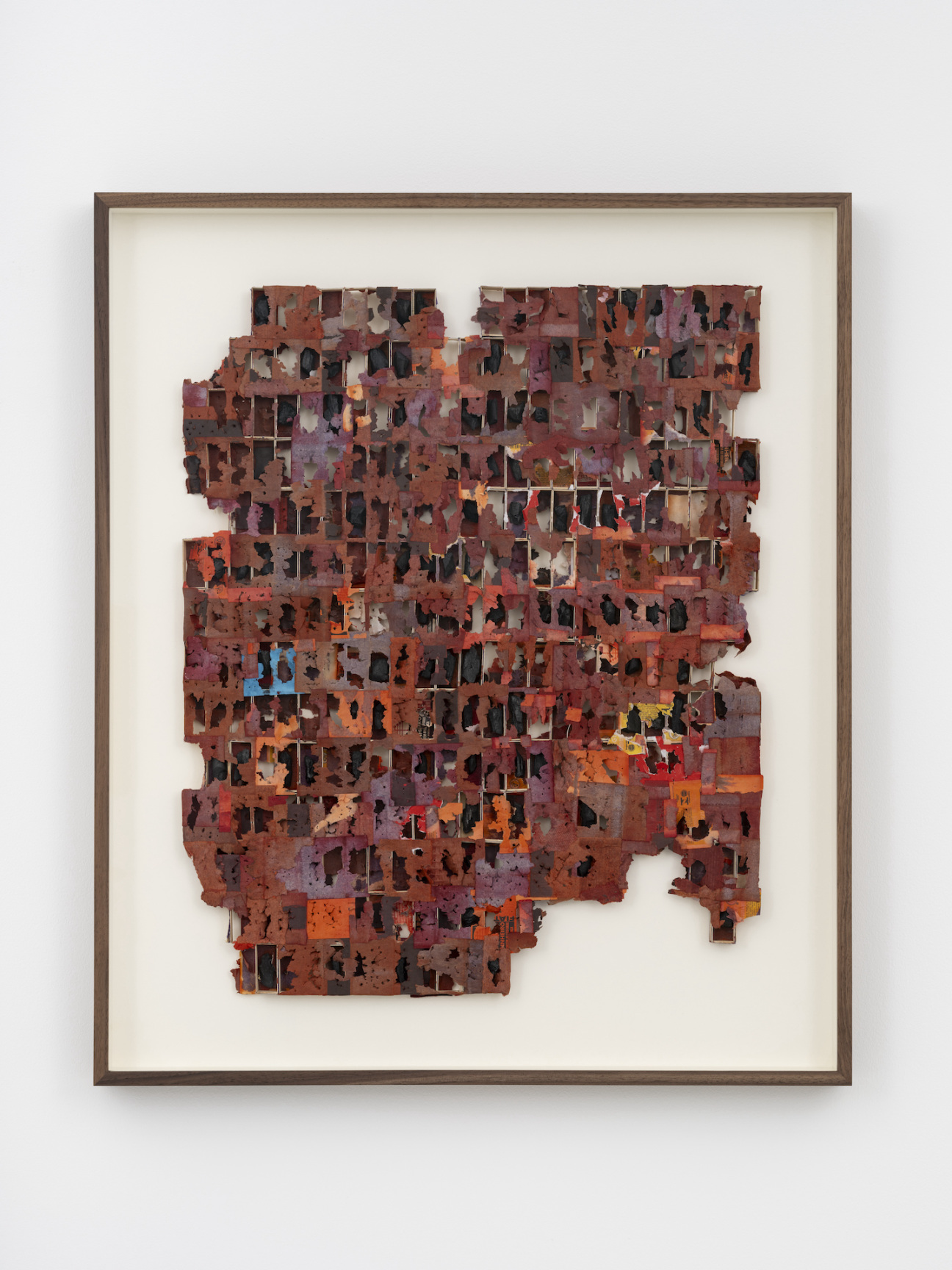
Antonio Tarsis at Carlos/Ishikawa
Joining a global moment for Brazilian art as curator Adriano Pedrosa, creative director of the Museum of Art São Paulo, helms this year’s edition of the Venice Biennale, Carlos/Ishikawa of London is showing a selection of works by Salvador-born, London-based Antonio Tarsis (b. 1995).
Without the resources to buy supplies when he started making art as a teenager, Tarsis discovered the material and conceptual potential of the small purple matchboxes that are ubiquitous on the streets of Brazil. He now uses them and other consumer byproducts to create grids, landscapes, and abstractions that draw on the meditative grids of Agnes Martin and the material ingenuity of Cildo Meireles. As curator Kiki Mazzucchelli noted in a 2023 essay on Tarsis, “the matchboxes are never simply used as a readymade, but rather taken apart and subjected to a labor-intensive process of preparation that involves a great deal of trial and error.”
Tarsis’s work has been included in group shows in New York—at Andrew Kreps and Tanya Bonakdar—and will be featured in the 38th Panorama of Brazilian Art at Museu de Arte Moderna de São Paulo later this year. Works in the Carlos/Ishikawa booth range from $3,000 to $33,000.
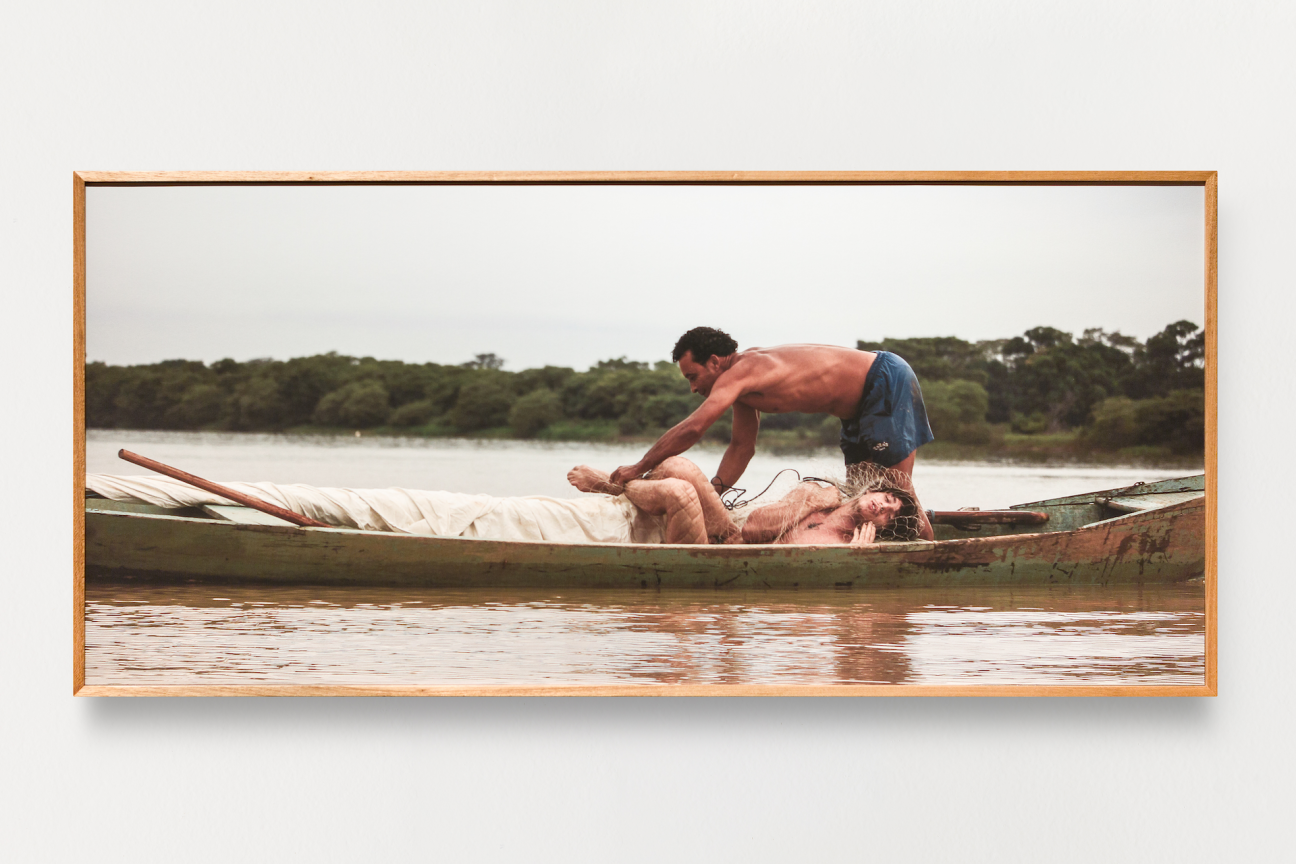
davi de jesus do nascimento at Mitre
Another rising Brazilian artist, davi de jesus do nascimento (b. 1997), makes his American debut with Belo Horizonte’s Mitre gallery (formerly Periscope). Nascimento lives and works in Pirapora, a city on the banks of the São Francisco River. Raised in a family of fishermen, washerwomen, and traditional carvers, Nascimento, who was nominated for the prestigious Pipa Prize in 2022, considers the river the “vein” of his practice and the “watercourse of his life.” Working across painting, drawing, performance, video, photography, and text, Nascimento imbues his work with a sense of spirituality and deep connection to the land and water that has sustained his family for generations. On view at Frieze are two recent photographs and one small-scale painting.
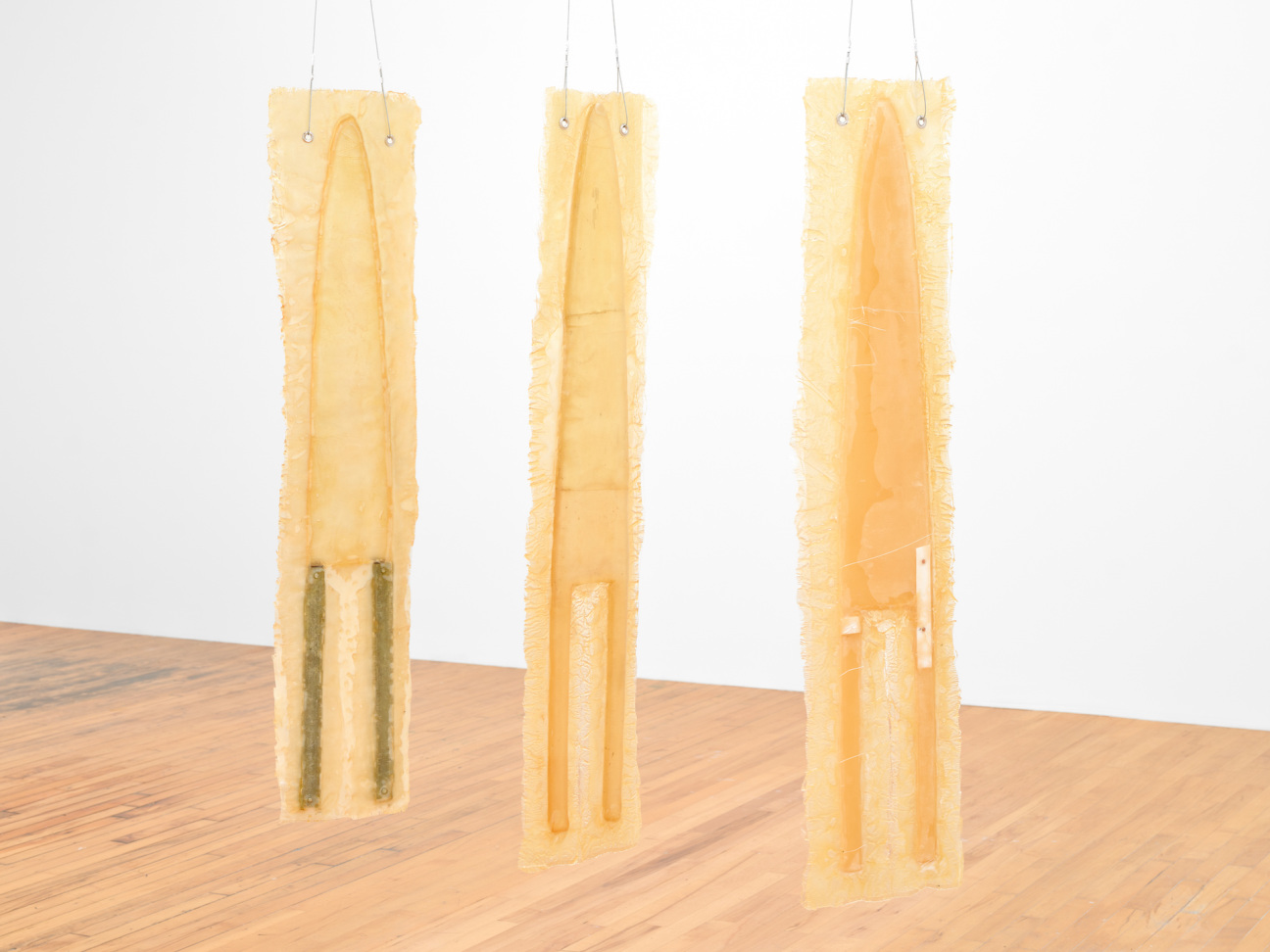
Maureen Gruben at Cooper Cole
Maureen Gruben (b. 1963) makes her Frieze debut at Toronto’s Cooper Cole with an homage to her late father, Eddie Gruben, a master Inuvialuk trapper and entrepreneur who founded the largest transport company in the Northwest Territories.
The tribute includes Gruben’s Nakataq etchings, made on aerial survey prints that oil companies use to document ice coverage and oil wells in the Arctic Ocean. Gruben scavenged the prints (as she does much of her material) from abandoned work camps near her ancestral land, on the northernmost part of North America. “When people think about Inuit art, it’s largely drawings and carvings, but Maureen’s work touches on many contemporary subjects, specifically her use of material and interest in honoring the land where she lives and protecting it,” says Cooper Cole’s Simon Cole.
Gruben’s solo show, “the land that used to be,” is on view until May 9 at the Contemporary Art Gallery in Vancouver. She is also included in a current show at the Rovaniemi Art Museum in Finland and will be featured in a show at IAIA Museum of Contemporary Native Arts in Santa Fe, opening this summer. Works are priced between $18,000 and $30,000.

